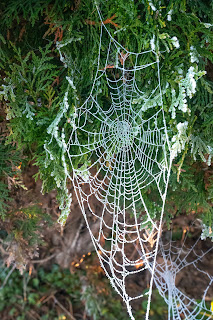Snowdrops at Hedingham Castle

Hedingham Castle grounds have been known for some time for having a beautiful display of snowdrops in the springtime, and although I had been there before, we decided to take Izobelle in her half term holidays. Luckily, it was a lovely day, weather wise. The snowdrops are planted mostly on the banks, which were part of the moated area in the past. Firstly, an image of the remains of the castle itself. Hedingham Castle is arguably the best-preserved Norman keep in England. The castle fortifications and outbuildings were built around 1100, and the keep around 1140. However, the keep is the only major medieval structure that has survived, albeit less two turrets. It is a Grade I listed building and a scheduled monument. The manor of Hedingham was awarded to Aubrey de Vere I by William the Conqueror around 1086. The castle was constructed by the de Veres in the late 11th and early 12th centuries, and the keep in the 1130s and 1140s. To accommodate the existing castle, a ...




